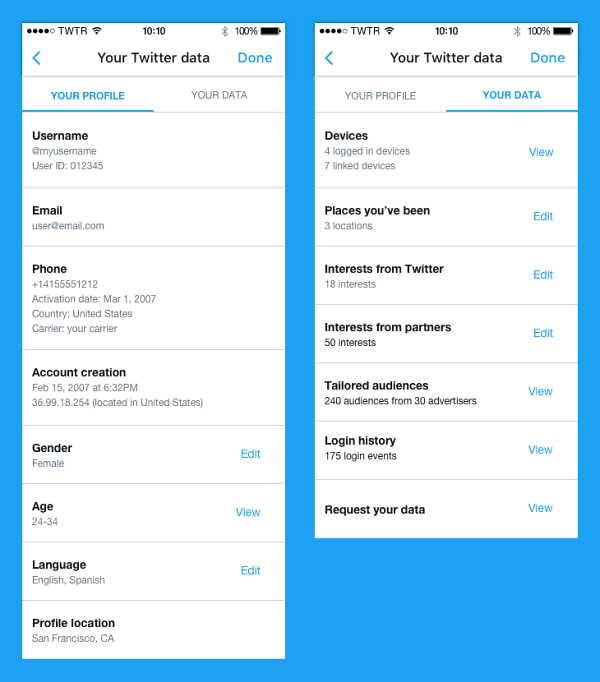What’s Changed in Twitter’s Privacy Policy?
A lot of changes have been made to the privacy policy, but there are three key changes to point out.
More data sharing. Twitter is changing the way it shares data with what the company refers to as “partners” but what it really means is advertisers. “We’ve updated how we share non-personal, aggregated, and device-level data, including through some select partnership agreements that allow the data to be linked to your name, email, or other personal information – but only when you give your consent to those partners” the company writes in its blog post about its data sharing policy.Web data is stored longer. Twitter uses cookies to store information about your activity when you visit the site. At the time of this writing that data is stored for 10 days. However, starting on June 18th your information will be saved for 30 days.Do Not Track is no longer supported. Most browsers have a Do Not Track setting that you can enable to stop advertisers from tracking your browsing history. Unfortunately, it only works on sites that support it. Twitter used to respect the Do Not Track industry-standard but no more. The company says “Twitter has discontinued support of the Do Not Track browser preference. While we had hoped that our support for Do Not Track would spur industry adoption, an industry-standard approach to Do Not Track did not materialize. We now offer more granular privacy controls.”
This new privacy policy doesn’t go into effect until next month – June 18th. However, the new controls are available now so you can opt-out of the personalized ad scheme now, and be ahead of the game.
New Twitter Privacy Settings
If you want to change the behavior of personalized ads or completely opt-out altogether, head to your Personalization and Data settings page. Then at the top of the page select the Disable All button. Also, make sure to scroll down to the bottom of the page and click Save Changes.
If you’re using the mobile app, head Personalization and Data and uncheck what you don’t want, or toggle off the Personalization and Data switch at the top. It appears that the opt-out choice doesn’t sync between the website and mobile. So, you’ll want to check both and make the appropriate changes.
Twitter also explains “We’re expanding Your Twitter Data to give you the most transparent access to your Twitter information to date, including demographic and interest data, and advertisers that have included you in their tailored audiences on Twitter. Each category of data will be clearly marked, and you will be able to view or modify this data directly.”
While the company appears to be taking a more aggressive approach to targeting users with ads, it’s also providing the tools we need to opt-out. The next time you log into Twitter, it does show a notification message pointing out the changes. Still, a lot of users will probably just click or tap to dismiss it. Then they won’t know about the changes in the policy — and that’s a win for Twitter and it’s “partners”. What do you think about the new privacy policy being implemented by Twitter? Do you plan to selectively opt-out of tracking or disable it altogether? Leave a comment below and let us know your thoughts. Comment Name * Email *
Δ Save my name and email and send me emails as new comments are made to this post.
![]()




